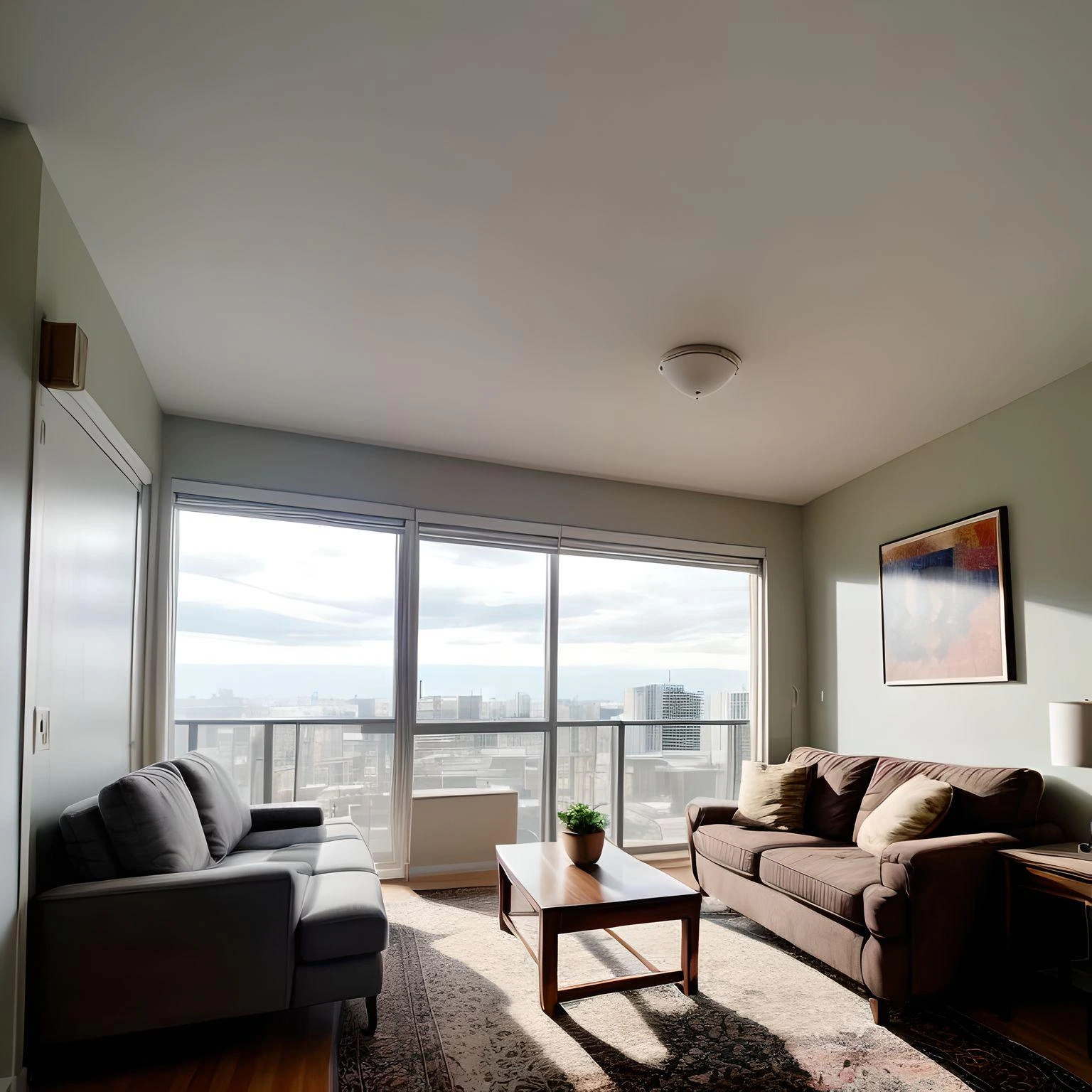September 29 2023
Reading time: 2 minutes
Why Basic Lighting Falls Short in North America's Condominiums: A Deep Dive into Design Flaws and Limitations

In the sprawling urban landscapes of North America, the silhouette of mid-to-high-rise condominiums often punctuates the skyline. These structures, despite their architectural advancements, frequently harbor an oversight within their walls: the lack of sufficient artificial lighting, particularly in the main living spaces.
The Ubiquity of the Flat Luminaire
The most common lighting solution in these condominiums is a single flat luminaire centered on the ceiling. On paper, it might seem sufficient, but in reality, this basic setup often fails to address the nuances of illuminating a space effectively. Rooms have corners, recesses, and design elements that a central light source can't reach. The outcome? Dimly lit spaces that lack the warmth and comfort homeowners seek.
Ceiling Height Limitations: A Design Challenge
One of the critical factors preventing the implementation of more specialized lighting options, like pot lights, is the limitation set by building codes. These codes dictate minimum ceiling heights, ensuring a certain standard of living conditions. As designers and developers race to maximize space, they often toe the line with these minimum requirements. This leaves little room for installing intricate lighting solutions which need more ceiling depth. Thus, specialized lighting solutions are often compromised for more straightforward, less efficient options.
Space Constraints in Condos: The Floor Lamp Dilemma
While floor lamps are a go-to alternative, they aren't a perfect solution. Notably, in smaller condominium units, where space is already at a premium, floor lamps can consume precious square footage. This spatial dilemma forces homeowners to choose between floor space and improved lighting.
The Resistance to New Materials and Technologies
Surprisingly, the technology and materials needed to overhaul this lighting gap exist. So why the resistance? Designers and developers often lean towards tried-and-true methods, primarily because of risk aversion. Introducing new materials or technologies comes with its set of challenges – from the unfamiliarity with installation procedures to skepticism about longevity and performance. As a result, innovative solutions that could bridge the lighting divide are often overlooked.
Economic Constraints and Choices
In a competitive real estate market, the bottom line matters. Cost-efficient solutions that meet the bare minimum are often preferred over more expensive, high-quality options. From the developers' perspective, adopting advanced lighting solutions may add to construction timelines and budgets, potentially affecting the project's profitability.
In Conclusion:
The problem of suboptimal lighting in North American condominiums isn't just about a lack of available technology or solutions. It's a complex interplay of design limitations, economic considerations, and a reluctance to embrace new innovations. But the construction and design industries stand at the cusp of transformation. As the architectural world progresses, so should our openness to the plethora of new materials and technologies at our disposal.
To all designers, architects, developers, and builders: Consider stepping away from conventional methods. There exist cutting-edge, cost-effective solutions that not only uphold but exceed the standards of modern-day living. A prime example? Innovative lighting solutions that can seamlessly embed into the concrete mounting structure, preserving the unit's height clearance by recessing into the structural ceiling thickness. This obviates the need for drywalls or any false ceiling installation. These solutions are certified for safety in North America and offer minimalistic yet efficiently distributed light sources, making living spaces feel complete. Dive deeper into these innovative solutions and transform the future of condominium lighting. Discover more at Geiode.
By actively integrating and championing such advancements, we lay the foundation for more illuminated, comfortable, and technologically-forward living spaces. Let's collectively work towards a luminous tomorrow for all.